International Day of Women and Girls in Science is celebrated globally each year on February 11.
To celebrate the day, we are highlighting five women with ties to the Clemson University College of Science who are making a difference with their work.
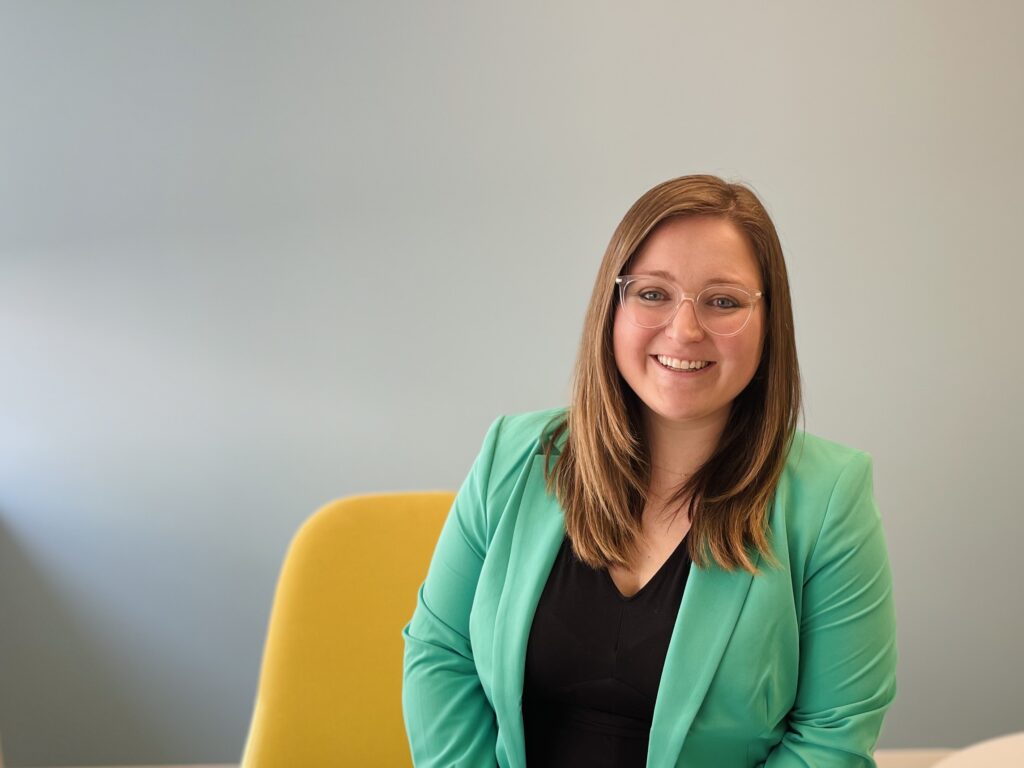
Megan Robertson
Megan Robertson can credit the original spark for her career choice to two classes – one Advanced Placement course she took in high school and a history of law course she took as a senior at Clemson.
Robertson ‘14, an attorney with the Washington D.C. office of law firm Epstein Becker Green, originally was accepted at Clemson as a psychology major. But while her application was pending, she took an AP biology course at her high school and found genetics interesting.
“I visited Clemson my junior year in high school, and I knew it was the place for me. I applied to other schools, too, just to have a back-up, but Clemson was one of the only schools I applied to that had a genetics major,” she said. “I switched my major almost immediately after I was accepted.”
As an undergrad, Robertson realized she didn’t want to work in a lab.
“I realized that the science interested me, but being in the lab wasn’t what I was passionate about. I was excited about innovation and thinking through the scientific aspects more than actually doing the science,” she said.
She thought about becoming a genetic counselor to merge her interest in genetics and psychology. But then graduate teaching assistant (and now Clemson faculty member) Kimberly Métris suggested patent law as an option. It was around the time the Supreme Court was deciding whether human genes could be patented. After taking the history of law course at Clemson, she solidified her decision to go to law school.
Robertson ultimately attended George Washington University Law School, in part for its patent law program. But while she was there, Robertson discovered there was a whole field of law dealing with health care innovation. It was a perfect fit for a science background.
She is now senior counsel at Epstein Becker Green, where she helps clients navigate the unique compliance issues faced by companies in the life sciences industry, including drug and device manufacturers, clinical laboratories, research sponsors, clinical research sites and contract research organizations. She also works with clients interested in investing in these types of life sciences companies.
Robertson, who earned her law degree from GWU in 2017, said her practice area is growing tremendously with the rapid advances in science, technology and healthcare.
“People are thinking of wild new things — new business models, new technology and using old technology in a new way. It’s fascinating,” she said. “Helping companies navigate the complex legal and regulatory landscapes in order to bring their vision to light and, hopefully, further medicine and science, is so gratifying.”
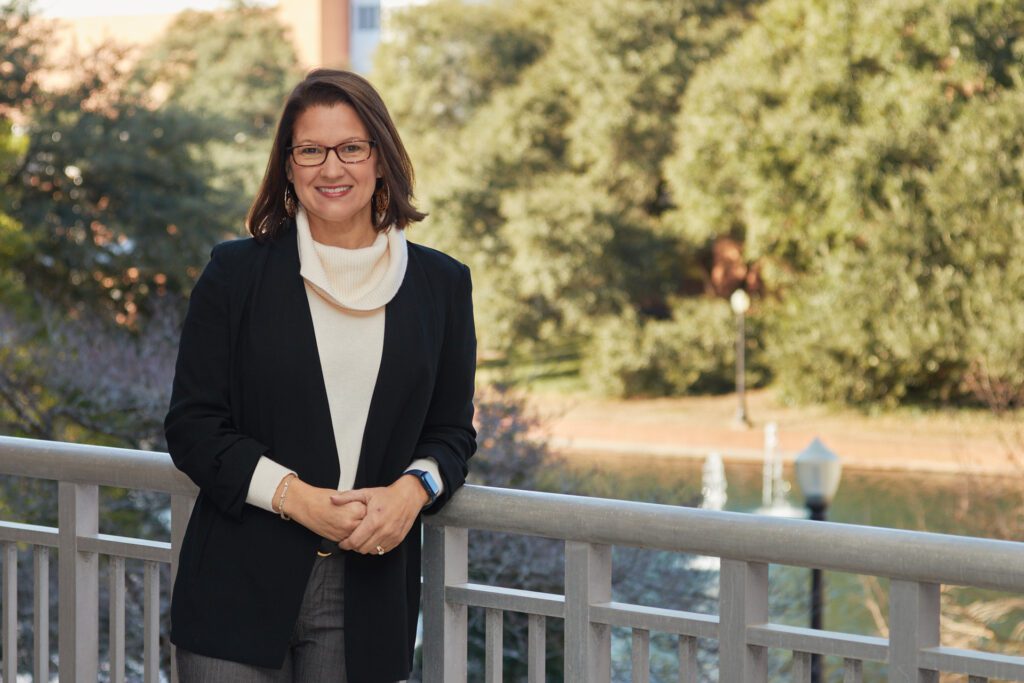
Ellen Breazel
Ellen Breazel has worked in data science her entire career, even before it was commonly known by that name.
“Data science is really the intersection of mathematics, statistics and computer science,”
said Breazel, a principal lecturer and the assistant director of data science online education and outreach for the Clemson University School of Mathematical and Statistical Sciences.
The field is a natural for Breazel because it ties all of her interests together.
Breazel has always liked puzzles, games and problem-solving. Her computer enthusiast father introduced her to computers when she was very young. Math came naturally to her. And, as a self-proclaimed sports fanatic, Breazel loved statistics and box scores.
When it was time to go to college, she decided to pursue a computer engineering degree at Clemson.
“I thought it would be a really good fit,” said Breazel, who also minored in mathematics. But three and a half years into the degree, she realized that she didn’t want to sit in front of a computer all day.
Instead, she realized what she really enjoyed was sitting in class thinking of different ways to present problems, helping a classmate or working in a group. She realized she wanted to teach at the college level.
Breazel worked full-time for IPTAY, Clemson’s athletic fund-raising organization, for the two years between her Clemson graduation and starting graduate school for statistics at the University of Georgia.
“When I took statistics, I enjoyed it so much. It was a different way of thinking, and I thought it was a real applicable math, something that I could do if I decided teaching wasn’t what I wanted to do,” said Breazel, whose dissertation at Georgia involved analyzing genotyping errors in microsatellite data and their effect on population differentiation statistics.
She came back to Clemson in 2008 to teach.
Eight years later, she was asked by then-math department head Chris Cox if she would help develop a new data science program. The online master’s degree program in data science and analytics (DSA), a collaboration between the College of Science’s School of Mathematical and Statistical Sciences and the Wilbur O. and Ann Powers College of Business, started in summer 2020 and is already rated among the nation’s top programs by Fortune.
Following its success, the late Kevin James, founding director of SMSS, asked Breazel to help develop an undergraduate data science program. That program will begin enrolling student in Fall 2024.
The two programs target different audiences. The undergraduate program is training students to be data scientists. Students in the DSA program are trained to be what Breazel calls data analysts, who help decision-makers make the right call.
“There is just so much data in the world. Companies and people need to make smart decisions with the data they have and that’s why the field of data science has become so incredibly popular,” she said.
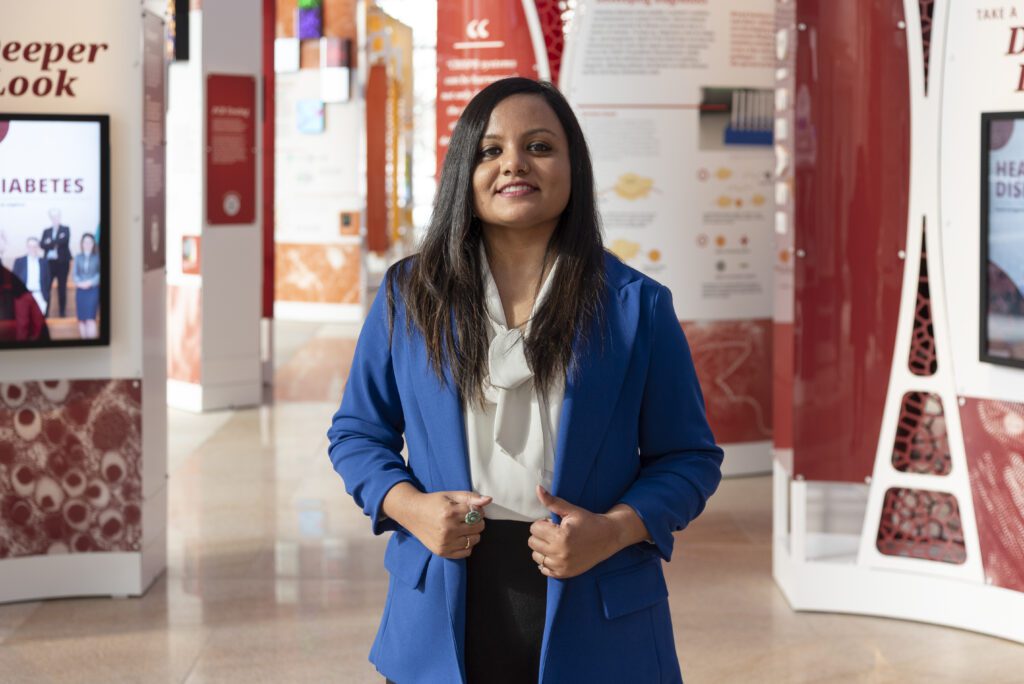
Namrata Sengupta
Namrata Sengupta came to Clemson University for a Ph.D. in environmental toxicology. She left with so much more.
“Ph.D. training is not just scientific training. You’re also learning critical thinking, problem-solving, project management, leadership and communication. Ph.D. training also trains you for such professional expertise later in your career,” Sengupta said.
Those are skills she puts to use daily as the associate director of science engagement, policy and advocacy for the Broad Institute of MIT and Harvard, a nonprofit biomedical research organization in Cambridge, Massachusetts.
Sengupta had completed her master’s degree in biotechnology and was working for a Bengaluru, India-based environmental nonprofit organization. Her work at Waste Wise Trust wasn’t lab-based or technical. Instead, Sengupta, who studied chemistry, microbiology and math as an undergraduate, worked with local governments, grassroots organizations and nonprofits to raise awareness, educate and advocate around environmental health-related topics.
She decided to pursue a Ph.D. in environmental toxicology in Professor Bill Baldwin’s lab, studying the effects of environmental contaminants on freshwater ecosystems.
“I thought having a really strong background in science would shape how I could really impact this field,” she said.
However, Sengupta didn’t want her learning opportunities to be confined to a lab.
She and four of her peers in the Department of Biological Sciences developed “What’s in Our Waters,” an outreach program that taught high school students about research and careers in environmental and biological sciences while giving them real-world field projects. The program still exists today. Starting the program and recruiting new mentors to keep it going not only taught Sengupta to be an effective communicator and educator but also a project manager.
She also gained leadership experience through the Clemson Graduate Student Government and took advantage of professional development programs and courses offered on campus.
She was applying for toxicology jobs in industry and consulting when she had an information interview with a senior leader at Clemson. She mentioned she could see herself coming back to academia in a sciencecommunication or engagement role after she worked awhile in industry.
“Why do you want to be late to the game?” he asked her. “If you truly know what your passion is, if you truly know where you want to make an impact, why not put your efforts in to actually get started on it sooner rather than later?”
After finishing her Ph.D. in 2016, she accepted a job as a science communicator at an academic journal based in Cambridge, Massachusetts. While working there and after the death of her mother, Sengupta realized she wanted to get involved professionally with an organization trying to advance research in human disease and human health. She went to work for the Broad in 2018.
As associate director of science engagement, policy and advocacy, Sengupta spearheads programs and strategic partnerships to advance public engagement. She engages with government officials, legislators and agencies to influence policies that align with Broad’s mission. Another one of her responsibilities is to lead the Broad Discovery Center, a public educational space that opened in 2022.
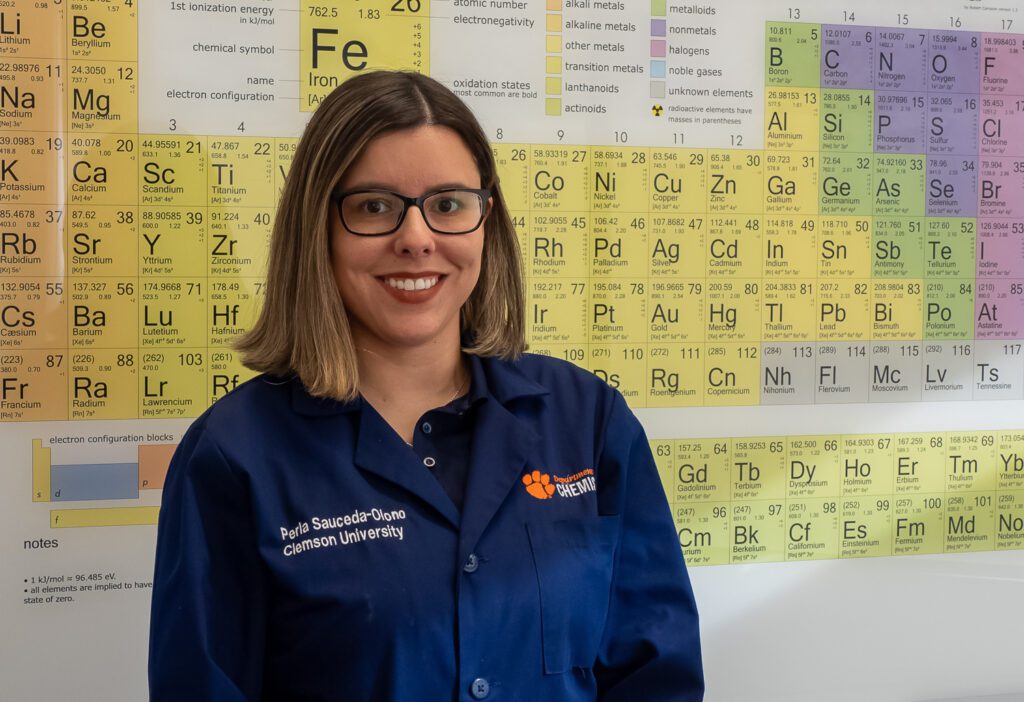
Perla Sauceda-Olono
Sometimes the path we find ourselves on isn’t the one we expected to take.
That’s true for Perla Sauceda-Olono, a Ph.D. candidate in the Clemson University Department of Chemistry.
“I originally started this journey because I didn’t want to teach,” said Sauceda-Olono, who plans to graduate in December. “Now, I cannot think of anything I want to do that is not teaching.”
In high school, she was 100 percent certain she wanted to study business administration — until she had a teacher that repeatedly told her class that if they didn’t have a company in their name by the time they finished college, they could end up being a professor like him.
“I didn’t want to be a professor,” she said. “I had no idea what I wanted to do, but I just knew I didn’t want to be a professor.”
She enrolled in a new program in mechatronics engineering at the University of Sonora in Mexico. Because the program was in its infancy, Sauceda-Olono said it sometimes felt like the students were guinea pigs as the professors were figuring out the best way to teach the material. After she finished that program, she earned a master’s in nanotechnology.
Sauceda-Olono didn’t think getting a Ph.D. was a fit, so instead, she got a job as the head of the chemistry labs at the National Technological Institute of Mexico campus in Hermosillo. She was promoted to career coordinator but couldn’t obtain a tenure track position because she didn’t have a doctorate. She enrolled in Clemson’s chemistry Ph.D. program after Professor Carlos Garcia gave a talk in her hometown.
Sauceda-Olono joined Garcia’s lab in Fall 2020. In Summer 2022, she switched to the lab of Professor Rhett Smith, where she is working on sustainable materials for construction. Specifically, she is researching ways to replace ordinary portland cement with materials prepared from sulfur waste and brown grease. Ordinary portland cement production requires a tremendous amount of water and energy. It also releases large quantities of carbon dioxide.
“We’re trying to take a greener approach to developing construction materials,” she said.
Last year, she had the opportunity to actually teach a general education chemistry course and discovered she loved it. Sauceda-Olono said she didn’t feel like she had the support of her professors when she struggled as an undergraduate student. Now, she tries to be that supportive professor she didn’t have to the undergraduate students she teaches.
“I’m here getting a Ph.D., and I love teaching,” she said. “It’s funny how life turns out to be.”
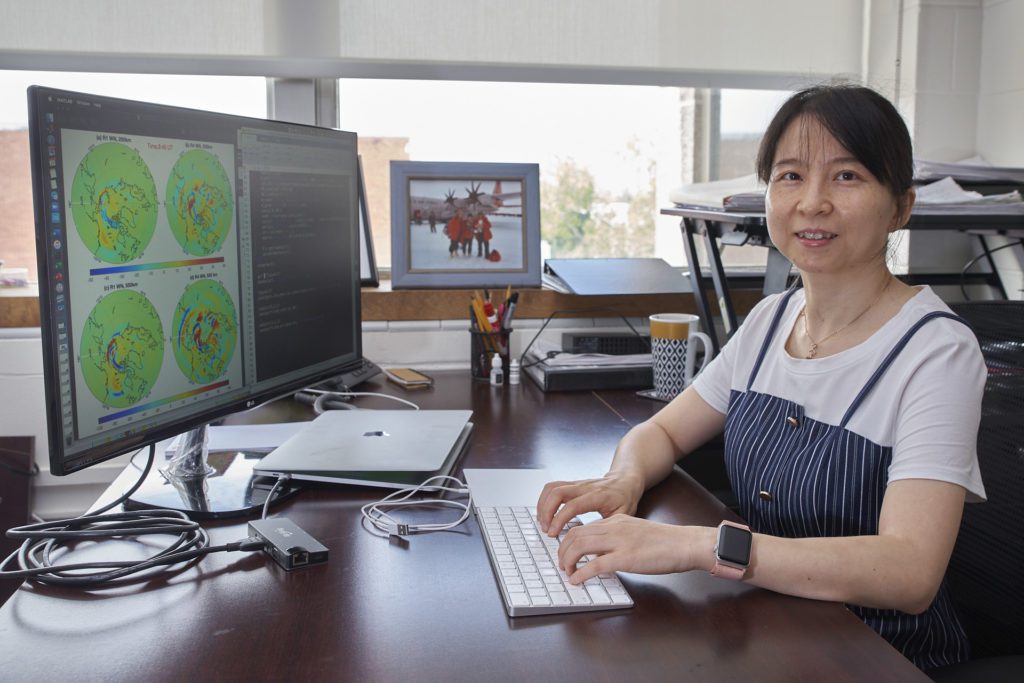
Xian Lu
To Xian Lu, physics is beautiful.
“There are physical laws that govern what’s happening in this world. Scientists summarize them with equations that can be used to understand it and even predict what will happen in the future,” said Lu, an associate professor in the Clemson University Department of Physics and Astronomy.
Lu became interested in space physics during her undergraduate study at Wuhan University in China. There was a research group that employed LiDAR, which stands for light detection and ranging, to investigate atmospheric winds, temperature and density 60 miles above the Earth’s surface.
“At night, they would shoot a laser beam up with yellow and green color to the sky, and I thought that was cool,” she said. From LiDAR, atmospheric waves can be detected. What was even more fascinating to her was that she could use the equations from physical laws to build a numerical model which can simulate those waves and mimic observations.
“Sometimes, physics plus math, it becomes really powerful,” Lu said.
She entered the Ph.D. program in atmospheric science at the University of Illinois at Urbana-Champaign. After earning her doctorate, she worked as a postdoctoral visiting fellow and research scientist at the University of Colorado Boulder. During that period, Lu spent two months at the McMurdo Station, the largest research station in Antarctica, operating LiDAR and analyzing scientific data. As she was working there, she felt so close to Mother Nature. The beauty of Antarctica and the associated polar science amplified her interests in exploring more of space.
She joined the Clemson faculty in 2016. Her research centers on space weather and atmospheric wave dynamics. She is currently leading a collaborative NSF/ANSWERS project,“Collective Impacts of Atmosphere Waves and Geomagnetic Disturbances on Quiet-time and Storm-time Space Weather.”
Space weather is activity on the Sun’s surface that ultimately affects the Earth and its atmosphere. Like tornadoes and severe thunderstorms here on Earth, space weather can also be devastating. Extreme space weather involves strong particle precipitation originated from solar winds and drastic disturbances on electric fields, which can impact power grids, spacecraft, and satellites used for communication, satellite navigation systems and military intelligence gathering.
“I want to know what’s going on behind and underlying the space weather scene such as stunning aurora and strong disturbances in magnetic fields,” she said. “To answer these questions, I rely on fundamental physics and math to do numerical modeling.”
Combining observations, Lu and her group have been excited to find out what are the physical processes (such as energy transfer, wind transportation and nonlinear interaction) that are controlling those phenomena, what are the consequences, and, at least as important, what will happen in the future so that governments and other leaders can prepare for mitigating the effects.
Get in touch and we will connect you with the author or another expert.
Or email us at news@clemson.edu
